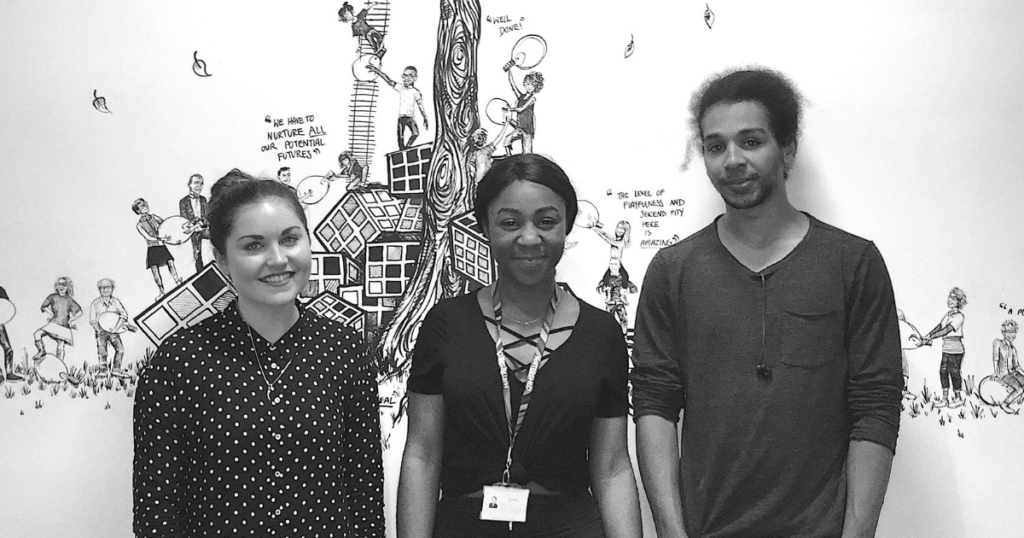We’ve been reading what everyone has been writing about productivity and we’ve pulled the top takeaways together in this useful post so you don’t have to. Here’s your guide to what everyone is saying about productivity.
Prioritise, produce and progress
First thing’s first, let’s get one misconception out of the way. Being busy doesn’t mean being productive. To be productive, you want your efforts to produce results that move you closer to an end goal.
“For you to be productive, you need to be producing something,” writes Anastasia Belyh, Co-Founder of Cleverism.com, who recommends using the Eisenhower Box to separate tasks into four categories:
- Urgent and important: Complete
- Important, but not urgent: Schedule
- Urgent, but not important: Delegate
- Neither urgent nor important: Eliminate
First, define productivity correctly so you can avoid prioritising tasks that mask procrastination as being busy. Next, manage your workload with a schedule. Finally, focus on getting value out of each task you do.
However, even when you are prioritising your time and concentrating on progress, you don’t need to be too regimented. Instead, allow yourself the freedom to try out new techniques.
Schedule but stay open
“I love learning new time-management tricks, tips on sleeping or mindfulness hacks to help me focus, and I think part of being productive is staying open to new ways of doing things,” says Jeetu Patel, Chief Product and Strategy Officer of Box.
Management of a workload is more than management of your time. Jeetu hints at the importance of sleeping and mindfulness for focus, but have you thought about just how closely productivity and relaxation are linked?
Rest and relax
Sarah Vaynerman, the founder of Work From Om, a yoga company based in New York City, described the positive impact she experienced when she started practising yoga: “I was expecting relaxation. There was plenty of that. But what really surprised me was how all other aspects of my life came to improve. My attention was improving, my focus was improving, my ability to organise was improving.”
So there is a significant connection between body and mind, and between productivity and energy levels, but what does this mean in terms of the working day? Well, you could try working hardest at the time that is right for you.
Budget your energy
“You know it’s important to budget your time wisely—but it can actually be more effective to also manage your energy,” says The Muse CEO, Kathryn Minshew.
Try committing to your concentration-intensive tasks during the hours when you perform best, whether you are a morning lark or a night owl. By managing your working day in line with your energy levels, you can make your hardest work a little easier.
Once you have taken control of your workload by aligning your pace with your natural rhythms, why stop there? There’s an argument that you can influence your success even more than that.
Choose your future
We all know the saying, whether you think you can or you think you can’t, you’re probably right. Think about this in terms of productivity. It’s down to your mindset.
“How can someone like Elon Musk run two large growth companies at the same time, and still find time to explore other ideas and interests? This is a good reminder that there is no true limit to what can be done,” says Sami Inkinen, CEO and Co-Founder of Virta Health.
To increase your productivity, start by changing your thinking. Imagine there are no limits and see how this impacts what you can produce.
However, a positive mindset does not mean you should push so far you burn out. It’s also important to say no, and the most important thing you’ll learn for your productivity is how to choose only the best opportunities that come your way.
Say no! Lots!
Sami Inkinen goes on to say: “Think of saying no as a muscle that has to be constantly trained. It’s the only way to make sure your time is invested the way you want it, not the way others want it.”
One way to start is by saying no to email, at least for some parts of the working day. Getting away from the drag of your inbox is really important if you have other work to focus on.
Ignore your inbox
If you still need to be available to your team, choosing more efficient communication methods such as instant messaging or using collaborative platforms can be a real breath of fresh air for your productivity levels. Mind Map Pro is a great example, with it’s real-time collaboration and live chat feature.
It’s also a good idea to set guidelines for how your team email internally, suggesting other tools or communication routes.
“Say what email is for,” says Amol Sarva, CEO of office-space startup Knotel, “Don’t email things that should be saved for meetings.”
Be real
Setting real guidelines is also useful for work outside of the realms of communication. For example, a guideline for helping teams calculate how long a task should take, and the effort they expect the task will require before it is completed.
Being realistic is incredibly important for productivity. Parkinson’s law is the adage that work expands so as to fill the time available for its completion. Set a realistic timeframe for a task, but if you mix up your calculations, don’t allow that task to grow with complexity just because you set yourself a generous deadline.
“If you give yourself a week to complete a two hour task, then (psychologically speaking) the task will increase in complexity and become more daunting so as to fill that week. It may not even fill the extra time with more work, but just stress and tension about having to get it done,” says Joel Falconer, the editor of gaming publication StartFrag and co-founder of Methodic Studios.
Following this thinking, the four-day week that many companies have started experimenting with might actually boost productivity, as long as you’re setting realistic deadlines for tasks.
Automate what you can
Research by McKinsey Global Institute reported that we are now “living in a new automation age in which robots and computers” can perform “routine physical work activities better and more cheaply than humans.”
The key findings showed that automation enables productivity growth and other benefits at both the level of individual process and businesses, as well as at the level of entire economies.
Change your toolkit
Finally, change your toolkit and introduce smarter processes. Combining mind mapping with space for adding notes, data, charts, images and files, with a live chat feature, Mind Map Pro keeps idea generation, development and discussions in one place.
What’s more, the new agile task manager extension is being released this Spring, meaning those great ideas can be assigned to team members and updated visually as your team progresses. This makes it easier than ever before to stay on track and be productive, and the best part is you can sign up for free.
Learn more about real time collaboration for teams or get a sneak peak of the agile board here.
To match your new found productivity with increased creativity, read about the importance of ideas, experimentation and empathy, in this post on design thinking.



